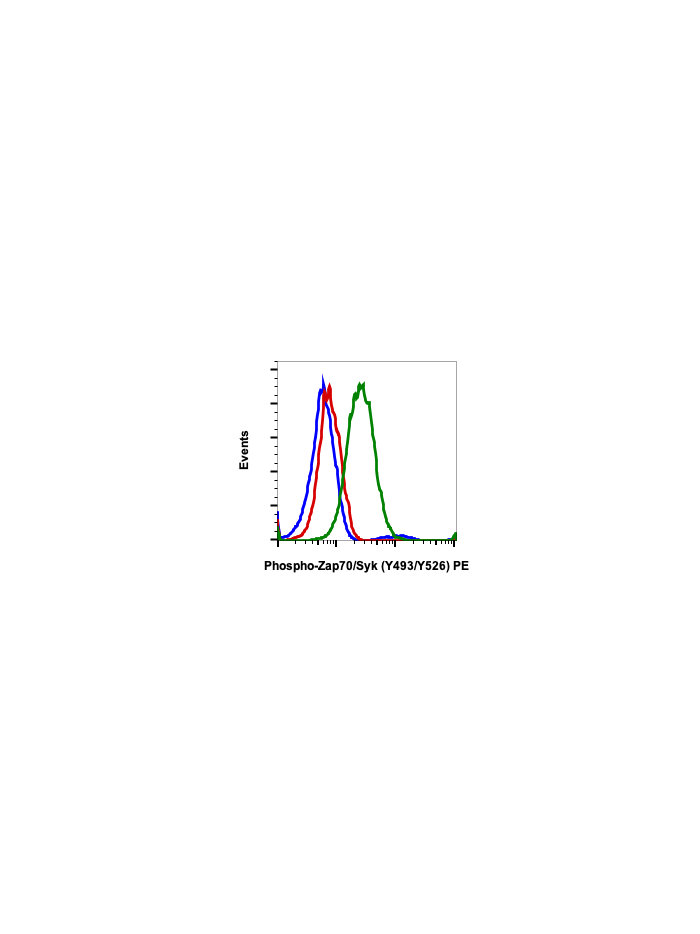Phospho-Zap70 (Tyr493)/Syk (Tyr526) (H11) rabbit mAb PE conjugate
ZAP70 (Tyrosine-protein kinase ZAP-70, phospho Zap70) is a protein tyrosine kinase (PTK) that associates with the z subunit of the T cell antigen receptor (TCR) and undergoes tyrosine phosphorylation following TCR stimulation. Following TCR engagement, Zap70 is rapidly phosphorylated on several tyrosine residues through autophosphorylation and transphosphorylation by the Src family tyrosine kinase Lck. ZAP70 contains two SH2-like domains with the PTK domain located at the C-terminus. It appears that both phospho Zap70 and Syk are recruited to the phosphorylated CD3 and z subunits after TCR stimulation. Phosphorylation of Tyr319 is required for the assembly of a phospho Zap70-containing signaling complex that leads to the activation of the PLC-gamma1-dependent and Ras-dependent signaling cascades in antigen-stimulated T cells. The orthologous Tyr352 residue in Syk is also involved in the association with PLC-gamma1.
| Applications | Flow Cytometry |
|---|---|
| Clone | Zap70Y493-H11 |
| Format | PE |
| Validated Reactivity | Human, Mouse |
| Cross Reactivity | Predicted to work with mouse, rat, and other homologues. |
| Clonality | Monoclonal |
| Immunogen | A synthetic phospho-peptide corresponding to residues surrounding Tyr493 of human phospho Zap70 |
| Formulation | 1X PBS, 0.09% NaN3, 0.2% BSA |
| Isotype | Rabbit IgGk |
| Preparation | Protein A+G |
| Recommended Usage | For flow cytometric staining, the suggested use of this reagent is 5 µL per million cells or 5 µL per 100 µL of staining volume. It is recommended that the reagent be titrated for optimal performance for each application. |
| Storage | 2-8ºC |
| Pseudonyms | Tyrosine-protein kinase ZAP-70 , 70 kDa zeta-chain associated protein, Syk-related tyrosine kinase, SRK, Tyrosine-protein kinase SYK, Spleen tyrosine kinase, p72-Syk |
| Uniprot ID | P43403 P43405 |
| References | 1. Brdicka T, et al., (2005) Mol Cell Biol, 25:4924–4933. 2. Chan AC, et al., (1992) Cell, 71:649–662. 3. Cheng AM, et al., (1997) Proc Natl Acad Sci, 94:9797–9801. 4. Deindl S, et al., (2007) Cell, 129:735–746. 5. Elder ME, et al., (1994) Science, 264:1596–1599. 6. Negishi I, et al., (1995) Nature, 376:435–438. 7. Yokosuka T, et al., (2005) Nat Immunol, 6:1253–1262. |



